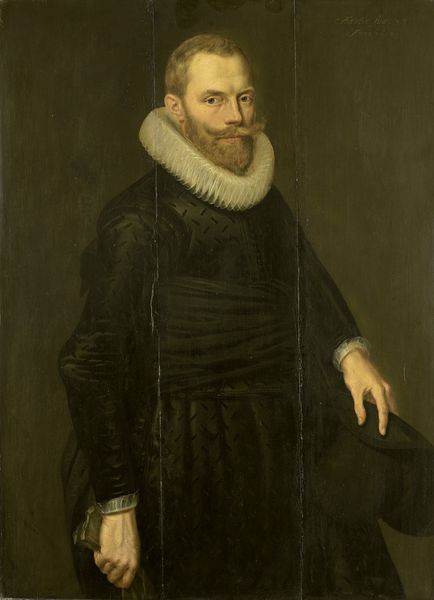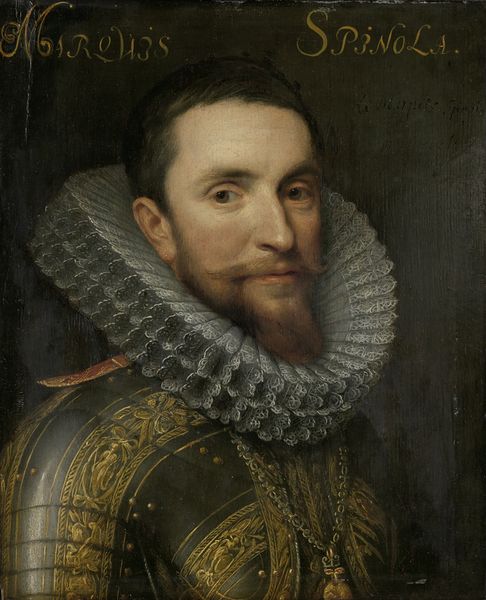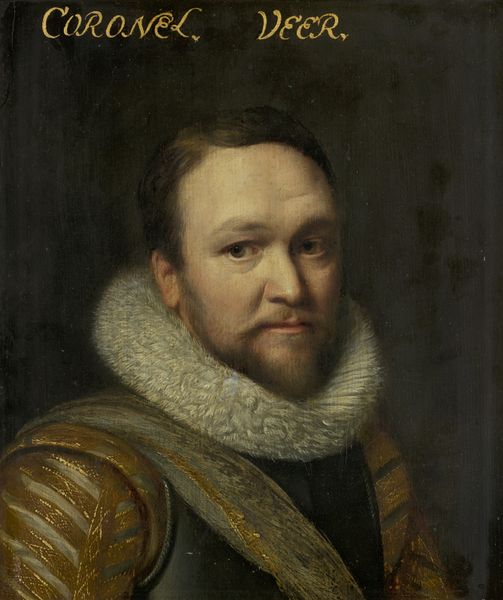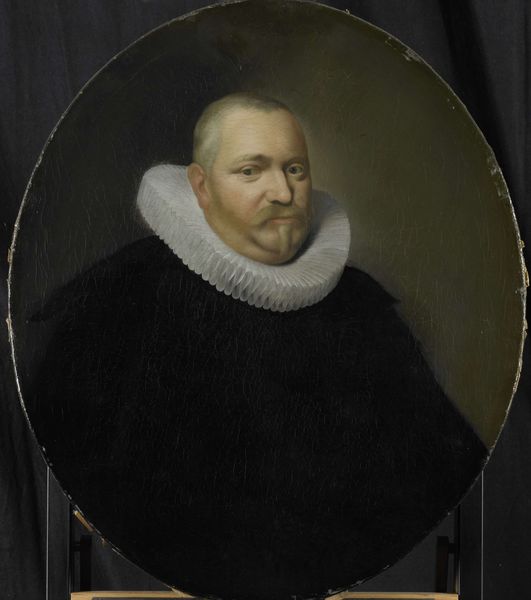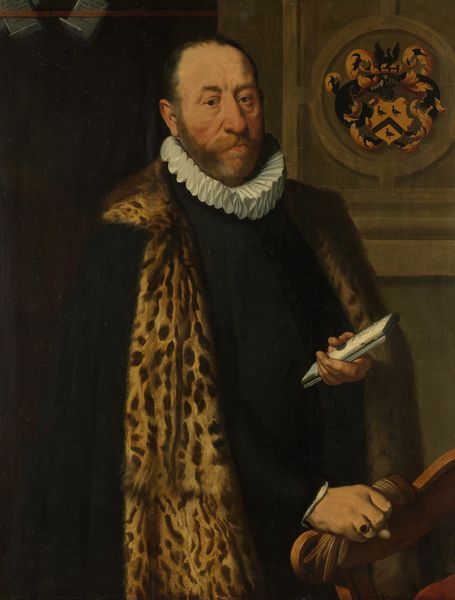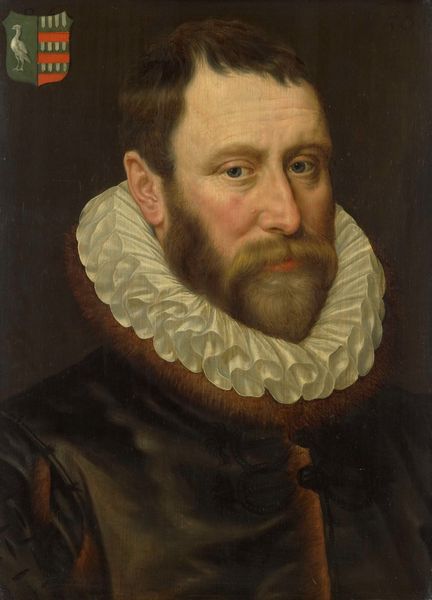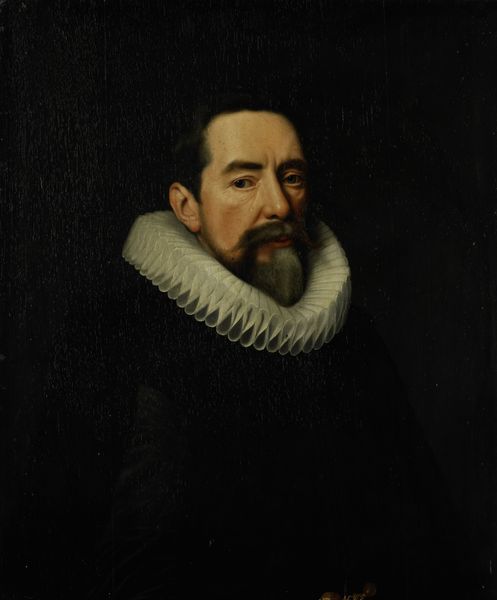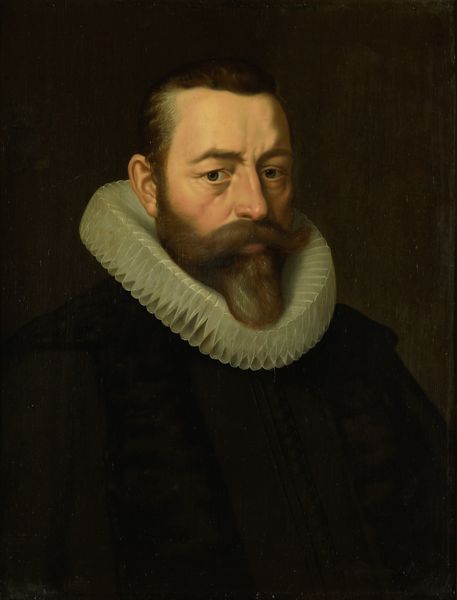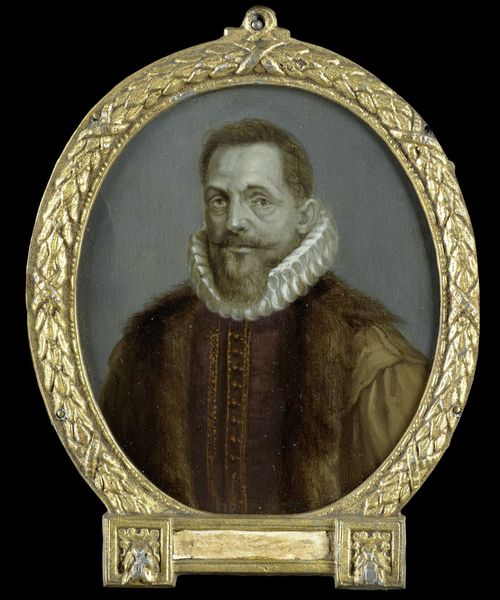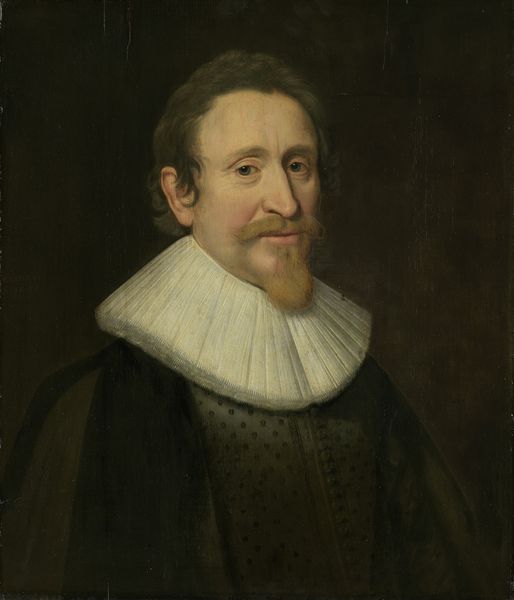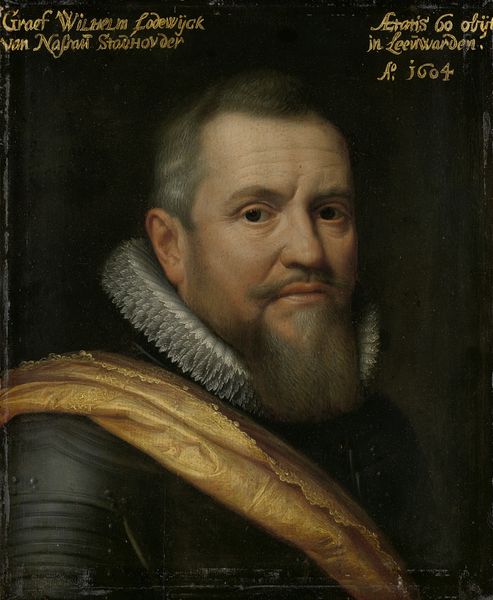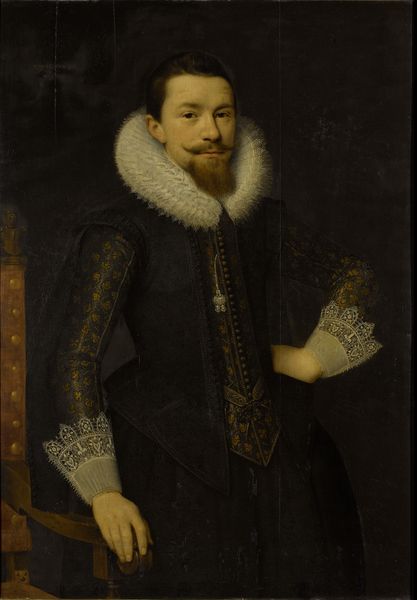
Dimensions: height 37 cm, width 32 cm, depth 3.5 cm
Copyright: Rijks Museum: Open Domain
Curator: Good day. Here we see “Aernout van Citters (1561-1634), Lord of Gapinge," an oil painting currently held in the Rijksmuseum. While attributed to Philip van Dijk, it was executed sometime between 1700 and 1753, significantly after Aernout van Citters lived. It's interesting to consider the historical implications of such a gap. Editor: My first thought is that this portrait projects an air of somber authority. The dark tones, combined with his unwavering gaze, feel very intentional. The ruff seems almost confining, adding to that feeling of rigid power. Curator: Absolutely. And given that it was created long after his death, this work serves more as a statement than a simple likeness. It's easy to forget how such portraits acted as vital status symbols in Dutch society, perpetuating family legacy and influence even generations later. There is often power and influence when images outlive their subject. Editor: Speaking of status, note the fur trim on his coat. Symbolically, fur has long represented wealth and nobility. Its prominent display underscores Van Citters' elevated position. And doesn't the shape almost mimic a kind of sheltering embrace? A tangible symbol of inherited privilege? Curator: Indeed, it signifies the hereditary claim he holds. Looking at it now in our own time, one might wonder at the intention behind commissioning such a portrait. What social anxieties or political aims were at play when this image was recreated? Did it reinforce a family's position during a period of uncertainty? Editor: It certainly encourages a certain line of questioning! I'm also intrigued by the oval format; how might that shape have influenced its perception and purpose? I can't help but see in the very constrained and enclosed structure of the portrait some reference to Aernout's sense of duty, bound, as he was, to this representation and role. Curator: It seems such framing can reflect that pressure. Ultimately, a portrait like this reveals the dynamic relationship between artistic representation, familial legacy, and social commentary in Dutch history. Thanks for those insightful visual considerations. Editor: And thank you, for putting the work into that important social and political context! I’ll carry my understanding forward!
Comments
No comments
Be the first to comment and join the conversation on the ultimate creative platform.
